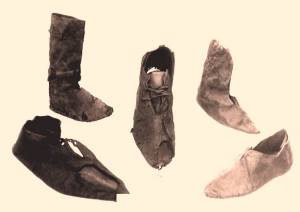Chris Sarantopoulos studied Geology in Scotland (you may hear him say aye a couple of times), then decided to diversify and did a Masters in Service Management. Alas, words and stories won him. Now he meddles with the lives of fictional characters in genres such as science fiction, post-apocalyptic fiction, dystopia, cyberpunk, fantasy, high fantasy, dark fantasy, and horror (not the splatter type though). When Chris is not writing, he spends his time crafting new stories and worlds, talks to friends who considered him lost somewhere in an imaginary world, or plays video games. Oh yeah, he likes music too. And books. He lives in Greece, and if you happen to spend time there, contact him. He may be able to arrange a meeting.
His work has appeared on Beyond Imagination, Voluted Tales and Eternal Haunted Summer among others.
You can sign up for his newsletter for updates and news at
http://eepurl.com/cUX9hrConnect with the Author
About the Book
Death made a mistake.
The Man Who Fed On Tears always knows whose time it is to pluck from the world of the living. His existence is one of a symbiosis between his need for the tears and woe he causes to those closest to the deceased, and the natural order of life and death to which he is bound. He never questions himself or his actions and has never made a mistake. Until now.
Stella is a four-year-old girl who misses her mommy and wants to see her again. She doesn’t yet understand the concept of loss, so when she sees close family members crying, she tries to stay cheerful and optimistic. After all, Mommy said they’d see each other again when the time comes At Horizon’s End. So if they’ll meet again, why is everyone crying?
Get it today on Amazon!
Keep reading for an interview with the author:
Why did you decide to be a writer?
Unlike most writers, I didn't always want to be one. Occasionally, I felt the urge to write something, but I had a little voice in my head (a very loud one) that dissuaded me every time I tried it. I'm very happy I silenced that voice eventually.
Do you have a "day job"?
I'm on a fixed term contract with the Municipality of the city I live in, and once that's over I'll be unemployed again.
How often do you write?
When I was unemployed I wrote or edited six days a week, for five hours each day. Now that I have a job, I try to write or edit for two hours during week days and another five hours on Saturdays. Sundays are write-free days.
What is the quirkiest thing you've ever done while writing?
Forget to eat. It sucks when it happens. Also, being bilingual and deep into my main character's point of view, I have sometimes answered as that character. In English (remember, I'm Greek, therefore I speak Greek)
What authors have most influenced you?
In no particular order: Margaret Weis, Tracy Hickman, G.R.R.Martin, R. Scott Bakker, Peter V. Brett, Richard K. Morgan, Stephen King
What are your goals as an author?
I'd like to get a foot into traditional publishing but I keep my options open with self publishing and small presses. Five years from today I'd like to have published not only my two yet-unpublished novels, but perhaps another two. One more at the very least. I'd like to start having a steady readership, and of course I'd like to have learned a thing or two about book promotions and marketing.
What is the best compliment you've ever received as an author?
A couple of weeks ago, a twitter follower complimented my latest short story (
At Horizon's End). Why was it so nice? Because I hadn't advertised my work to that follower (or anyone else on twitter for a long time) and he not only spent money on my work, but he also took the time to let his followers know about my story. We had never spoken to each other, didn't know one another, but he did all that for me.
What is the worst writing advice you've ever received?
Write ten books per year. Sorry, that's not how I do things. I can't work like that.
How many books do you have on your "to read" list?
I'm on the third book of
The Expanse so the rest are in my "to read" list.
Mistborn is there as well, the second trilogy of R. Scott Bakker's
The Prince of Nothing and so so so many more.
What made you decide to self-publish?
I wanted to learn as much as possible about marketing and promoting my work, preferably before I published my first novel. Which is why I'm publishing my short stories and trying things out.
What is your writing process?
First, extensive planning and outlining. I use a modified version of the Snowflake method for my novels. For my short stories, I use the 7-point system. After outlining, I draft the story. For a book, I usually need three months, maybe less. Once that's done, I put the story away for at least a month. Then I start revising and editing it. I usually go through fifteen to twenty revision and editing rounds. Then it's off to my beta readers. Once I get all their feedback I start revising and editing again, but it's hard to tell how many rounds of edits it takes me.
How long does it take you to write a book?
Drafting takes three months. Revising and editing it takes up to two more years. Planning and outlining takes at least another six months.
Have you ever wanted to put one of your characters together with a character from one of your favorite novels? What characters would you choose and how would their meeting go?
You've caught me off guard. The thought has never crossed my mind, so it's something I have to consider.
What inspired your current work?
The effect modern technology has on us, and even worse, the effect and impact future technology will have on our world.
Do you have anything specific you'd like to say to your readers?
I'm looking forward to hearing from all of you. If you ever come to Greece, let me know. I might be able to arrange a meeting or something.





 The types of shoes worn would be different depending on your trade, where you lived, and your social status. They might be made of leather, wool, fur, or wood. Peasants often wore poor quality knee-high boots that laced up the front. English peasants also wore a heavy shoe made of undressed leather with the hair on the outside. They were called revelins or slops. The nobility wore a high quality close-toed slipper, the design of which changed with the fashions of the day. Early on, they remained relatively plain, but in the high and late Middle Ages they may have been elongated, pointed, and/or decorated with elaborate designs. Leather shoes could be stamped, tooled, or decorated with cutouts. Shoes were not always necessary, however. As hose became fashionable for men, soles were often sewn directly into the hose.
The types of shoes worn would be different depending on your trade, where you lived, and your social status. They might be made of leather, wool, fur, or wood. Peasants often wore poor quality knee-high boots that laced up the front. English peasants also wore a heavy shoe made of undressed leather with the hair on the outside. They were called revelins or slops. The nobility wore a high quality close-toed slipper, the design of which changed with the fashions of the day. Early on, they remained relatively plain, but in the high and late Middle Ages they may have been elongated, pointed, and/or decorated with elaborate designs. Leather shoes could be stamped, tooled, or decorated with cutouts. Shoes were not always necessary, however. As hose became fashionable for men, soles were often sewn directly into the hose. Turnshoes were the most popular type of medieval shoe, particularly in the northern regions. These ankle-high shoes had a triangular flap that folded over the ankle and stayed attached with a latchet or thongs. They were very plain, with no embellishments and flat soles. These types of shoes were made inside out, then soaked in a bucket of water until they were soft enough to turn them the right way. This would have been done very carefully to prevent over-stretching the leather or tearing it. Once completely dry, the shoe would be stiff again. It might have a sole added at this stage, but it could also be worn without one.
Turnshoes were the most popular type of medieval shoe, particularly in the northern regions. These ankle-high shoes had a triangular flap that folded over the ankle and stayed attached with a latchet or thongs. They were very plain, with no embellishments and flat soles. These types of shoes were made inside out, then soaked in a bucket of water until they were soft enough to turn them the right way. This would have been done very carefully to prevent over-stretching the leather or tearing it. Once completely dry, the shoe would be stiff again. It might have a sole added at this stage, but it could also be worn without one. In the 14
In the 14

















